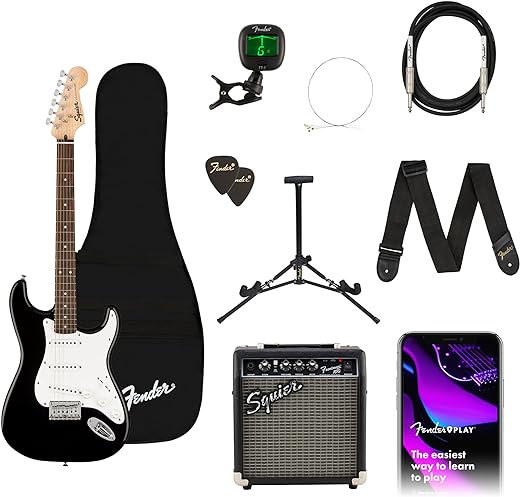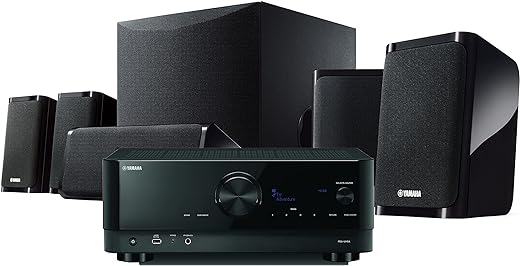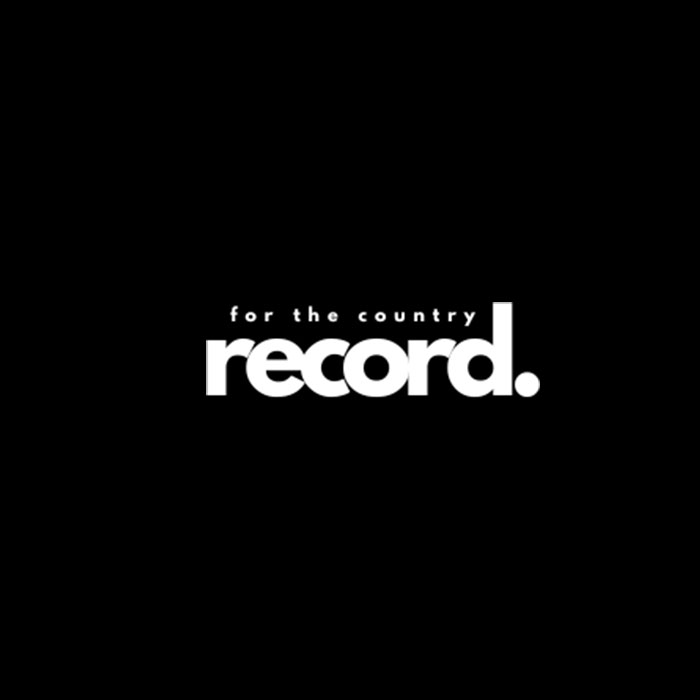Exploring Different Types of Record Players
Are you a music enthusiast who appreciates the warm, nostalgic sound of vinyl records? Or perhaps you’re new to the world of record players and are curious to learn more about this timeless audio experience. No matter where you fall on the spectrum, this blog post is here to serve as your guide in exploring the different types of record players. We understand that choosing the right record player can be a daunting task, with a myriad of options available. That’s why we’re here to help you navigate through the complexities and make an informed decision. So, join us as we dive into the world of record players and uncover the unique features and benefits of each type. It’s time to elevate your listening experience to a whole new level.
Understanding Belt-Drive Record Players
In the world of vinyl record players, there are two main types of drive systems: belt-drive and direct-drive. In this blog section, we will focus on belt-drive record players, explaining what they are, how they function, and discussing their advantages and disadvantages. Whether you’re a seasoned audiophile or a newcomer to the world of vinyl, understanding the inner workings of belt-drive record players can help you make an informed decision when purchasing your next turntable.
What are Belt-Drive Record Players?
Belt-drive record players, as the name suggests, use a belt to drive the platter that holds the vinyl record. The belt connects the motor to the platter, transmitting the rotational energy required to spin the record at a constant speed. This design allows for a smoother and quieter operation compared to direct-drive record players.
How do Belt-Drive Record Players Function?
- Motor: Belt-drive record players feature a motor mounted away from the platter. This motor drives a pulley, which in turn rotates the belt.
- Belt: The belt is typically made of rubber or silicone and is looped around the motor pulley and the platter. As the motor turns, it rotates the belt, which in turn spins the platter.
- Platter: The platter is the component that holds the vinyl record. It sits atop the belt and rotates at a constant speed determined by the motor and belt. The stylus, or needle, rests on the record’s grooves, producing sound as it tracks along the spiral.
Advantages of Belt-Drive Record Players
Belt-drive record players offer several advantages over their direct-drive counterparts. Let’s take a closer look at some of these benefits:
1. Speed Accuracy
- Belt-drive systems provide excellent speed accuracy, ensuring that the record spins at the desired speed consistently.
- This accuracy is crucial for maintaining the correct pitch and overall sound quality of the music being played.
2. Low Noise Levels
- Belt-drive record players operate quietly due to the isolation of the motor from the platter.
- The belt acts as a vibration dampener, reducing motor noise and minimizing unwanted vibrations that could affect sound quality.
3. Easy Maintenance
- Belt-drive systems are generally easier to maintain compared to direct-drive systems.
- The belt itself is a replaceable component and is relatively inexpensive. Replacing a worn-out belt is a straightforward task that can significantly extend the life of the turntable.
Disadvantages of Belt-Drive Record Players
While belt-drive record players offer numerous advantages, it is essential to be aware of their limitations:
- Belt-drive systems may exhibit a slight speed variation over time due to belt stretching or wear.
- Higher-end models often include features to minimize these speed variations, such as adjustable speed controls or electronic speed regulation.
Exploring Direct-Drive Record Players
Direct-drive record players have gained popularity among audiophiles and music enthusiasts for their unique features and superior performance. In this section, we will delve into the concept of direct-drive record players, discussing their advantages, disadvantages, and key considerations for those looking to invest in one.
Better Torque and Speed Control
One of the standout features of direct-drive record players is their exceptional torque and speed control. Unlike belt-drive turntables, which rely on a belt to transfer power from the motor to the platter, direct-drive turntables have the motor directly integrated into the platter. This direct connection eliminates any loss of torque or speed variations, resulting in more accurate and stable rotation.
- Example: The Technics SL-1200 series is a renowned line of direct-drive turntables that have been trusted by DJs and audiophiles for decades. These turntables offer precise speed control, allowing DJs to seamlessly mix tracks without any noticeable variations in tempo.
Pros and Cons of Direct-Drive Record Players
Pros
- Improved torque: Direct-drive turntables provide better torque, which is especially important for DJs who need to quickly start and stop records.
- Stable rotation: With a direct connection between the motor and platter, direct-drive turntables offer more stable rotation, reducing pitch variations and ensuring faithful playback.
- Durability: The direct-drive mechanism is generally more robust and durable compared to belt-drive systems, making direct-drive turntables a long-term investment.
- Pitch control: Many direct-drive turntables come with built-in pitch control, allowing users to adjust the speed of playback for beatmatching or personal preference.
Cons
- Motor noise: Due to the direct integration of the motor, direct-drive turntables can generate more motor noise compared to belt-drive counterparts. However, advancements in motor design have significantly reduced this issue.
- Vibration susceptibility: Direct-drive turntables are more susceptible to vibrations, as the motor is directly connected to the platter. This can potentially affect audio quality, although quality turntables often come with isolation features to minimize this issue.
Key Considerations
When considering a direct-drive turntable, here are some important factors to keep in mind:
- Budget: Direct-drive turntables can vary in price, so it’s essential to determine your budget and find a model that suits your needs.
- Usage: If you’re a DJ or require precise speed control, look for direct-drive turntables with accurate pitch adjustment features.
- Motor and platter design: Consider the motor design and platter materials, looking for features like improved damping or isolation to minimize vibration transfer.
- Cartridge compatibility: Ensure that the turntable you choose is compatible with your preferred cartridge type, as some models may require specific cartridges for optimal performance.
Comparing Manual and Automatic Record Players
In the world of vinyl records, choosing the right record player is crucial for a satisfying music listening experience. One of the key decisions to make is whether to go for a manual or automatic record player. Each type has its own set of advantages and considerations, which we will explore in this blog section.
Manual Record Players: Convenience and User Control
Manual record players offer a level of convenience and user control that many vinyl enthusiasts appreciate. Here are some key points to consider:
1. Greater User Control
- With a manual record player, you have complete control over the start and stop of the record. This allows for more precise cueing and playback control.
- By manually placing the stylus on the record, you have the ability to skip tracks or play specific sections of a song.
2. Enhanced Audio Experience
- Manual record players often have a higher level of audio quality, as they typically come with better tonearms and cartridges. This can result in a more detailed and accurate sound reproduction.
3. Long-Term Cost
- Manual record players tend to be more affordable than automatic record players. This makes them a popular choice for those who are just starting their vinyl collection or have a limited budget.
4. Maintenance and Durability
- Manual record players are generally easier to maintain and repair. They have fewer moving parts and are less prone to mechanical issues.
- With proper care, manual record players can last for decades, providing a long-term investment for vinyl enthusiasts.
Automatic Record Players: Ease of Use and Automated Features
Automatic record players, on the other hand, offer a different set of advantages that cater to those seeking convenience and ease of use. Here are some key points to consider:
1. Effortless Operation
- Automatic record players have automated features that make them incredibly easy to use. Simply press a button, and the turntable will start, move the tonearm to the starting point, and gently lower the stylus onto the record.
- This is especially beneficial for those who may have physical limitations or prefer a hassle-free experience.
2. Reduced Risk of Damage
- The automated features of automatic record players help minimize the risk of mishandling or damaging records. The controlled movement of the tonearm and stylus prevents accidental scratches or skips.
- This can be particularly advantageous for those with a valuable or rare vinyl collection.
3. Convenience and Time-Saving
- Automatic record players allow you to enjoy your vinyl records without the need for constant attention or manual operation. This is particularly useful if you want to multitask or have a busy lifestyle.
- Additionally, some automatic record players have features such as automatic record size detection and auto-stop function, which add to the overall convenience.
Factors to Consider
When deciding between manual and automatic record players, it’s essential to consider factors such as cost, maintenance, and personal preference. Here is a summary of the key points:
| Factors | Manual Record Players | Automatic Record Players |
|---|---|---|
| User Control | ✔️ | ❌ |
| Audio Quality | ✔️ | ❌ |
| Cost | ✔️ | ❌ |
| Maintenance | ✔️ | ❌ |
| Ease of Use | ❌ | ✔️ |
| Risk of Damage | ❌ | ✔️ |
| Convenience | ❌ | ✔️ |
Ultimately, the choice between a manual and automatic record player comes down to personal preference and priorities. Some may prioritize user control and audio quality, while others may value convenience and ease of use. Whichever option you choose, the joy of listening to vinyl records will undoubtedly be enhanced.
Remember to explore different brands and models to find the perfect record player that suits your needs and preferences. Happy listening!
Unveiling Modern Turntable Technology
In recent years, technology has revolutionized the world of turntables, breathing new life into this classic audio device. Modern turntables now come equipped with a range of innovative features that enhance the listening experience and offer unprecedented convenience. This section will delve into the advancements in turntable technology, including USB connectivity, Bluetooth compatibility, built-in speakers, and other cutting-edge features.
USB Connectivity: Bridging the Analog-Digital Gap
One of the most significant developments in modern turntables is the inclusion of USB connectivity. This feature allows users to easily connect their turntables to their computers, enabling them to digitize their vinyl collection. With the ability to convert analog recordings into digital files, users can conveniently enjoy their favorite tracks on their smartphones, tablets, or computers. Some noteworthy turntables offering USB connectivity include:
- Audio-Technica AT-LP120XUSB Direct-Drive Turntable
- Sony PS-HX500 Turntable
- Pro-Ject Debut Carbon DC
Benefits of USB connectivity:
- Convenient digitization of vinyl records
- Easy access to music on various digital platforms
- Preservation of analog recordings
Bluetooth Compatibility: Seamless Wireless Playback
Another modern feature that has gained popularity in turntables is Bluetooth compatibility. With this technology, users can wirelessly connect their turntables to speakers or headphones, eliminating the hassle of tangled cables. Bluetooth-enabled turntables offer the freedom to stream music effortlessly, enhancing the overall listening experience. Some notable turntables with Bluetooth compatibility include:
- Audio-Technica AT-LP60XBT Fully Automatic Belt-Drive Turntable
- Sony PS-LX310BT Belt Drive Turntable
- Pro-Ject T1 BT Turntable
Benefits of Bluetooth compatibility:
- Wireless streaming for a clutter-free setup
- Conveniently connect to Bluetooth-enabled speakers or headphones
- Easy integration into multi-room sound systems
Built-in Speakers: Compact All-in-One Solutions
For those seeking a hassle-free and compact solution, turntables with built-in speakers are an excellent choice. These all-in-one devices eliminate the need for external speakers, making them ideal for smaller spaces or portable setups. While built-in speakers may not offer the same audio quality as dedicated speaker systems, they provide a convenient option for casual listening. Some noteworthy turntables with built-in speakers include:
- Victrola Vintage 3-Speed Bluetooth Portable Suitcase Record Player with Built-in Speakers
- Crosley Cruiser Deluxe Vintage 3-Speed Bluetooth Suitcase Turntable
- Sony PS-LX310BT Belt Drive Turntable with Built-in Speakers
Benefits of built-in speakers:
- Compact and portable design
- Minimal setup required
- Ideal for casual listening or on-the-go use
Additional Innovative Features
Modern turntables have introduced various innovative features to enhance the overall user experience. These include:
- Direct Drive: Turntables with direct-drive motors offer improved speed stability and precise playback, making them ideal for DJs and audiophiles. Notable direct-drive turntables include the Technics SL-1200 series and Pioneer PLX-1000.
- Automatic Start/Stop: This feature automatically lifts the tonearm and stops playback when the record finishes, preventing unnecessary wear and tear. The Audio-Technica AT-LP3 Turntable is a popular choice with automatic start/stop functionality.
- Adjustable Speed: Some turntables allow users to adjust the playback speed to accommodate different vinyl formats, such as 33 1/3, 45, and 78 RPM. The Audio-Technica AT-LP120XUSB and Pro-Ject Debut Carbon DC turntables offer adjustable speed settings.
Summary and Final Thoughts
In conclusion, this blog post provided a comprehensive overview of the various types of record players available in the market. By delving into the differences between belt-drive and direct-drive models, as well as manual and automatic record players, readers gained a better understanding of the options at their disposal. Additionally, the post highlighted the advancements in modern turntable technology, emphasizing the need to factor in personal preferences, budget constraints, and desired features when making a purchase. Armed with this knowledge, you can confidently navigate the world of record players and make a well-informed decision.







I really enjoyed reading about the modern turntable technology. It’s amazing how far record players have come! I’m particularly interested in the USB turntables that allow you to digitize your vinyl collection. Do you have any recommendations for good USB turntables?
Thank you for your comment! USB turntables are indeed a great way to digitize your vinyl collection. Some popular options in the market include the Audio-Technica AT-LP120XUSB and the Sony PS-LX310BT. It’s important to consider factors like sound quality, ease of use, and software compatibility when choosing a USB turntable.
I have a vintage record player but it’s been giving me some trouble lately. The belt keeps slipping off and it’s becoming frustrating. Any advice on how to fix this issue?
Thank you for your comment! A slipping belt can be caused by a worn-out belt or a loose motor spindle. I would recommend checking the belt for any signs of wear and replacing it if necessary. Additionally, make sure the motor spindle is securely attached to the turntable and tighten any screws if needed.
I found this article really helpful in understanding the differences between belt-drive and direct-drive record players. I recently bought a belt-drive player and now I know why it’s recommended for audiophiles. It produces a more accurate and detailed sound. Thanks for the information!
I’ve always been curious about the debate between manual and automatic record players. Personally, I prefer the manual ones because I feel more connected to the process of playing a record. But I can see why some people might prefer the convenience of automatic players. Great article!
Thank you for your comment! It’s interesting how different people have different preferences when it comes to manual and automatic record players. Both options have their merits and it ultimately comes down to personal preference and convenience.
One potential pain point I’ve experienced with record players is the setup process. It can be quite tricky to properly balance the tonearm and set the tracking force. Any tips on how to make this process easier?